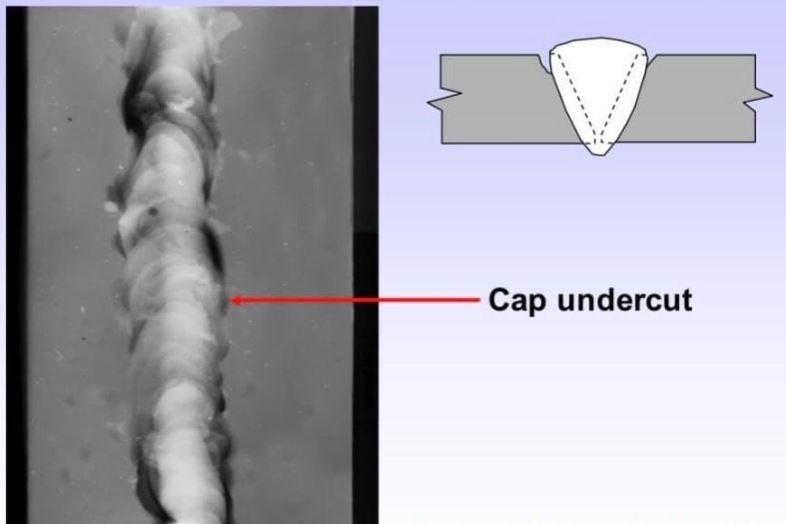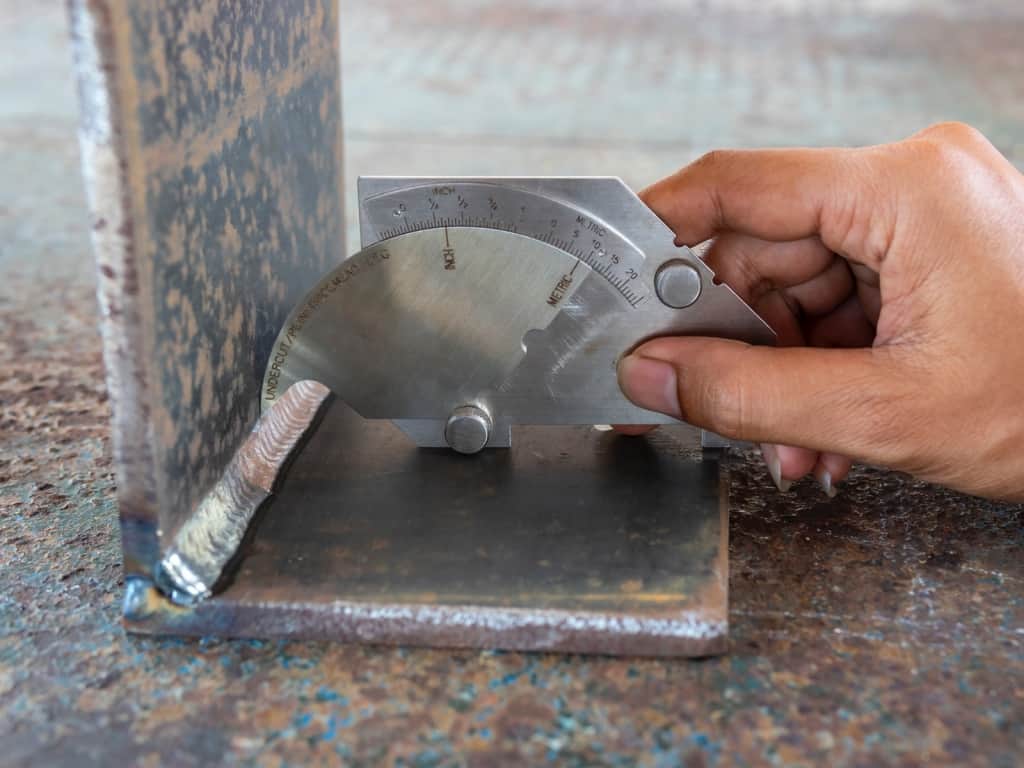Step-by-Step Guide to Preventing Weld Undercut in Different Metals
Step-by-Step Guide to Preventing Weld Undercut in Different Metals
Blog Article
Comprehending the Causes and Solutions for Undercut Welding in Steel Manufacture Procedures
In the world of metal fabrication processes, the incident of undercut welding postures a substantial challenge that demands a thorough understanding of its reasons and viable options. The elaborate interplay of different elements throughout welding procedures can result in this undesirable phenomenon, affecting the structural honesty and overall quality of the bonded joints - Preventing weld undercut. By dissecting the origin of undercut welding and exploring efficient restorative steps, fabricators can raise the standard of their handiwork and guarantee the manufacturing of remarkable steel components
Typical Sources Of Undercut Welding
Regularly overlooked in steel manufacture, undercut welding takes place because of different factors that require meticulous focus and competence to be properly alleviated. One typical source of undercut welding is too much warm input. When the warmth input is expensive, it can cause the melting and succeeding erosion of the base product along the edges of the weld joint, producing a groove or undercut. In addition, inappropriate welding methods, such as utilizing the wrong welding angle or travel rate, can also add to undercut development. Insufficient shielding gas protection is one more key element that can lead to undercutting. Not enough gas coverage stops working to safeguard the weld pool appropriately, bring about oxidation and undercut flaws. The choice of welding criteria, such as voltage, current, and cord feed rate, plays a significant duty in the incident of undercut welding. Recognizing these usual causes is important for implementing safety nets and making sure premium welds in steel construction processes.
Impact of Incorrect Welding Parameters
Unreliable welding specifications can dramatically compromise the integrity and top quality of welded joints in metal construction processes. The effect of inaccurate welding parameters manifests in numerous means, leading to structural weaknesses and problems in the bonded components. Meticulous interest to welding specifications is paramount to ensure the production of high-quality welds with the preferred mechanical buildings and structural stability.
Effect of Improper Torch Angle
Improper lantern angle in welding procedures can substantially affect the high quality and honesty of the last weld joints in metal fabrication procedures. The lantern angle plays an important role in identifying the warm input and distribution throughout welding. When the lantern angle is incorrect, concerns such as damaging can occur. Undercutting is an usual welding defect where a groove develops along the weld toe, compromising the joint and endangering its structural stability.
A lantern angle that is as well high can bring about insufficient infiltration, insufficient fusion, and increased spatter. On the other hand, a lantern angle that is also superficial can cause extreme infiltration, burn-through, and distortion of the base material. Preventing weld undercut. Appropriate lantern angle is important for making certain constant weld quality, strength, and appearance
To avoid undercutting and various other defects triggered by inappropriate torch angles, welders should be educated to preserve the correct torch angle throughout the welding procedure. Normal monitoring and change of torch angles during welding can aid accomplish audio welds with minimal issues.
Duty of Inadequate Welding Methods

Another element of poor welding strategies is incorrect weld preparation. Inadequate cleansing of the base steels, incorrect joint style, or insufficient edge preparation can all add to undercut welding. Furthermore, inadequate shielding gas protection or utilizing the incorrect kind of gas can cause insufficient combination and the formation of undercut issues.
To deal with the role of insufficient welding strategies in metal fabrication procedures, it is vital to give detailed training for welders. Correct education on welding criteria, joint prep work, and shielding gas choice can aid protect against undercut welding and make certain top quality welds in steel fabrication projects.
Effective Solutions for Undercut Welding
Dealing with undercut welding in metal manufacture requires executing effective services to improve weld quality and structural honesty. Among site link the main solutions to battle undercut is to readjust welding specifications such as voltage, existing, and travel speed to make sure appropriate heat input and fusion. By fine-tuning these settings, welders can protect against extreme melting of the base metal and filler product, decreasing the probability of undercut development.
Furthermore, appropriate joint preparation is essential in protecting against undercut. Making sure tidy base steel surfaces without impurities and utilizing the suitable bevel angle can help promote better weld penetration and reduce the danger of undercut - Preventing weld undercut. Utilizing ideal welding strategies, such as oscillating the torch or weaving, can additionally aid in dispersing warm evenly and loading the weld joint sufficiently, minimizing the possibility of undercut issues
Furthermore, picking the appropriate welding consumables, consisting of electrodes and filler steels, is necessary in reducing undercut. Making use of materials with proper chemical compositions and mechanical buildings can contribute to attaining audio welds with marginal undercut. Regular evaluation and quality assurance procedures must likewise be carried out to discover and resolve undercut problems promptly, ensuring the overall honesty of fabricated metal elements.

Conclusion
Finally, understanding the reasons and remedies for undercut welding in steel manufacture procedures is critical for attaining top quality welds. By dealing with typical reasons such as wrong welding specifications, improper torch angle, and poor welding techniques, welders can stop undercutting and guarantee strong, durable welds. It is important to focus on these variables and apply reliable options to boost the overall welding procedure and end product high quality.

Report this page